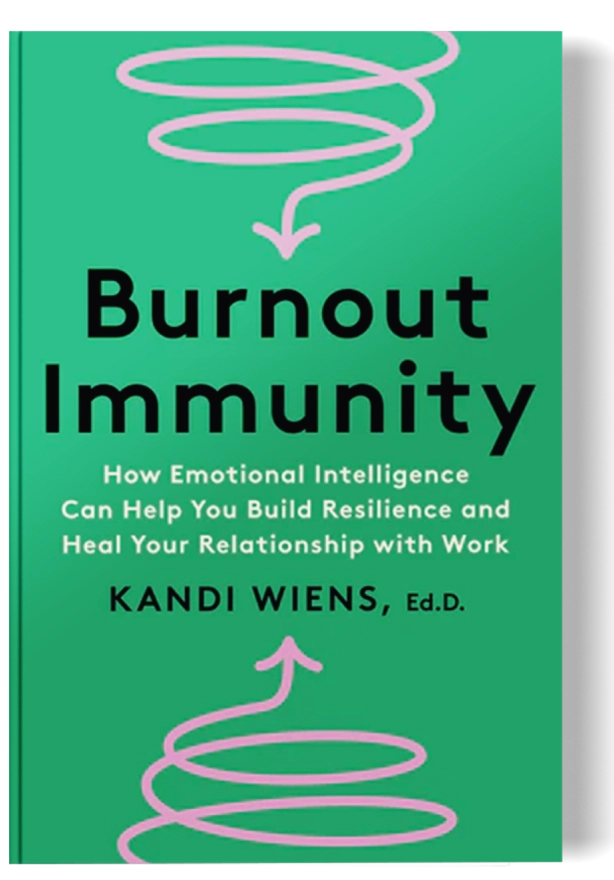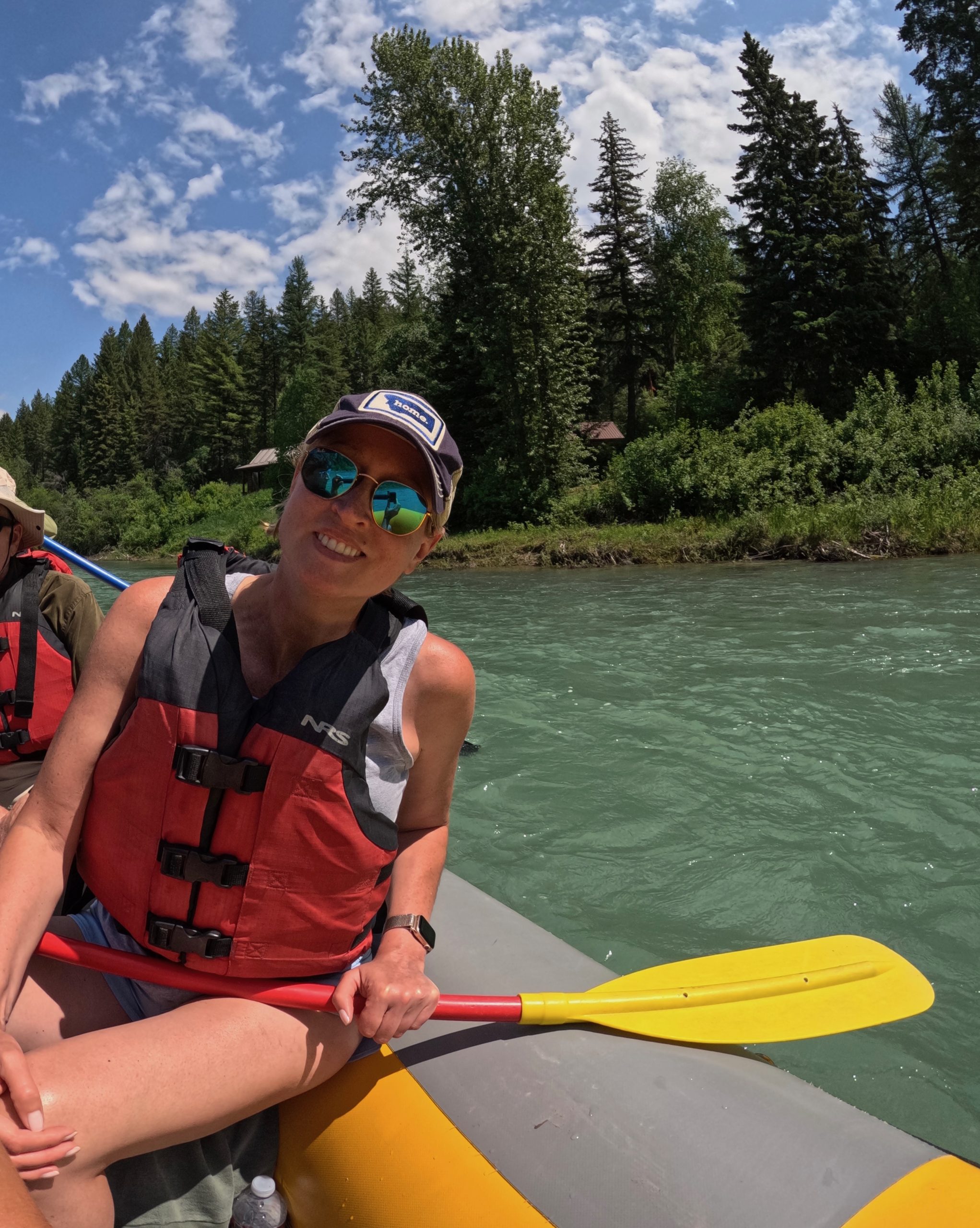The Flathead River in Montana doesn’t care about your schedule.
It moves at its own ancient pace, winding through wilderness valleys with the patient persistence of water that knows exactly where it’s going. When our raft guide called out “paddle forward!” as we approached a Class III rapid, I felt something shift inside me—not just the boat responding to the current, but my jacked-up nervous system dropping into what I can only call river time.
For months, I’d been living in what I now recognize as artificial time—the frantic pace of traveling and speaking, the urgent press toward meeting spring semester deadlines, the self-induced pressure I put on myself to design the perfect research study. But here, surrounded by my sons and friends as we navigated the churning water, I experienced something I’d forgotten existed: the deep rhythm of simply being present in the flow.
That moment in the rapids became my teacher. The river showed me what I’d been missing in all my rushing toward somewhere else.

Trading Rapids for Overwhelm
I spent the first half of this year caught in my own kind of whitewater—but not the exhilarating kind. After launching Burnout Immunity, I found myself trapped in what I’d come to recognize as hurry sickness: that chronic feeling of urgency that makes everything feel like a crisis requiring immediate attention.
Unlike the honest challenge of navigating actual rapids, hurry sickness creates artificial urgency. Every email becomes a waterfall to avoid. Every deadline feels like rocks jutting from the current. You’re constantly paddling harder, never realizing that the emergency is mostly in your mind.
The river taught me the difference. Real rapids require presence, skill, and trust in the current. Hurry sickness demands frantic activity that fights against the natural flow of life.
So after writing about hurry sickness, I decided to conduct an experiment: What would happen if I actually learned to move at river time instead of artificial urgent time?
Learning to Read the Water
River guides do something they call “reading the water”—seeing current patterns, recognizing where flow naturally goes, distinguishing real obstacles from navigable challenges. When I created space in my schedule—protecting time for Montana with my sons, building “recovery eddies” into my calendar—I realized I have work to do to develop this skill in my own life.
Slowing to river time revealed patterns I’d missed while paddling frantically: mental loops keeping me three steps ahead instead of present, the building of chronic physical tension, the compulsion to stack my calendar and rush every conversation.
Surprisingly, slowing down enhanced rather than hindered my mission to help people avoid burnout. Like a river moving powerfully in its natural channel, my work became more effective without artificial urgency. My Harvard Business Review piece flowed effortlessly. Research insights emerged organically. Speaking engagements felt more authentic. I discovered how much energy I’d wasted fighting the current.
The Sacred Pause
Supporting my sister Jodi through chemotherapy taught me about river time’s sacred pauses—those quiet pools between rapids where healing happens. In whitewater rafting, you don’t just survive rapids; you rest between them, checking with your crew, preparing for what’s ahead.
“You know what I love about you being here?” Jodi asked during treatment. “You’re not trying to navigate me through this or rush me to the other side. You’re just here.”
That’s when I understood: the presence I’d been too hurried to offer was actually my most valuable gift.
Staying in River Time
The challenge, of course, is maintaining this quality of flow when you return to a world that operates in artificial urgency. The current of hurry sickness is strong, especially when you’re passionate about your work and surrounded by a culture that mistakes activity for progress.
But rivers have taught me some navigation strategies:
Create eddies in your schedule. Just as rivers have calm pools where you can rest and regroup, I’m getting better at building buffer time around important activities—not as padding for efficiency, but as space for presence and transition.
Practice reading the water before entering. When opportunities arise, I’ve learned to say “let me check my calendar and get back to you.” This creates space to assess whether something aligns with my natural flow rather than just my availability.
Notice when you’re fighting the current. Rapid talking, impatience at red lights, the urge to multitask during conversations—these are early warning signs that I’m slipping back into artificial urgency mode.
Trust that presence is powerful. The river moves mountains not through force, but through persistent, patient flow. The quality of attention I bring to my work and relationships creates more lasting impact than the quantity of tasks I complete.
The Deepest Current
Perhaps the most profound lesson from my river time was this: my worth isn’t determined by how fast I move through life or how efficiently I navigate challenges.
The people I love don’t need me to be optimally productive; they need me to be genuinely available. My work becomes more meaningful when it flows from this place of inherent worth rather than earned worth through achievement.
This summer taught me that slowing down isn’t the opposite of meaningful work—it’s what makes meaningful work sustainable. When we stop fighting our way toward impact, we create space for the kind of presence that actually changes things.
The river keeps flowing whether we rush alongside it in panic or learn to move with its ancient wisdom. The choice is always ours: artificial urgency or natural flow, hurry sickness or river time.
What would change in your life if you learned to read your own water—to trust your natural rhythms instead of forcing yourself into someone else’s current? What has river time taught you about the difference between urgent and important?
I always love hearing from you! Send me a message and share your insights with me.
Remember: you don’t have to fight the current to reach where you’re meant to go.
— Kandi




